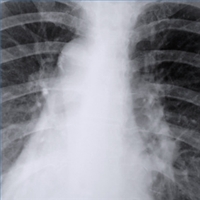May 27, 2011
by Trish S
0 comments
If you are unsure about mold issues in your building or home and your landlord refuses to take responsibility towards remediating the problem, you do have options. Contact your local board of health or housing authority. Health codes fall under state and local, not federal jurisdiction. Contact your state or county health department in order to read up on local codes and regulation in order to know your legal rights.
More information available at Center for Disease Control.
Mold Remediation
April 15, 2011
by Trish S
0 comments
If you are concerned about health problems that are associated with exposure to mold, you should first contact your family or general health care provider inorder to determine if you need a refer to see a specialist. Specialist include allergists, physicians who treat mold allergies, or an infectious disease physician, who treats mold infections. If the infection is located in the lungs, a pulmonary physician might be needed.
More information available at Center for Disease Control.
Mold Remediation
March 18, 2011
by Trish S
0 comments
The Center for Disease Control does not recommend sampling and testing of mold. It is not necessary to identify the species of mold. Most species of mold cause allegies and other health risks of the respiratory systems. If you are susceptible to mold and mold is seen or smelled, you will run significant health risks. Regardless of the type of mold that is present, you should arrange for removal and remediation, which doesn’t involve testing but locating the source of the moisture which allows the mold to cultivate.
More information available at Center for Disease Control.
Mold Remediation
February 18, 2011
by Trish S
0 comments
If you choose to use bleach to clean up mold:
- Never mix bleach with ammonia or other household cleaners. Mixing bleach with ammonia or other cleaning products will produce dangerous, toxic fumes.
- Open windows and doors to provide fresh air.
- Wear non-porous gloves and protective eye wear.
- If the area to be cleaned is more than 10 square feet, consult the U.S. Environmental Protection Agency (EPA) guide titled Mold Remediation in Schools and Commercial Buildings. Although focused on schools and commercial buildings, this document also applies to other building types. You can get it by going to the EPA web site at http://www.epa.gov/mold/mold_remediation.html .
- Always follow the manufacturer’s instructions when using bleach or any other cleaning product.
More information available at Center for Disease Control.
Mold Remediation
January 14, 2011
by Trish S
0 comments
Most commonly, molds affect many people by allergenic reactions. Symptoms include nasal stuffiness, eye irritation, sneezing, wheezing, and skin irritation. However, many people report more severe reactions to mold. These symptoms go beyond the basic skin and respiratory irritations to include fever, and asthmatic attacks. Chronic lung disease, such as obstructive lung disease, develop mold infections inside of the lungs. The 2004 Institute of Medicine found evidence to link upper respitory diseases to otherwise healthy individuals.

Mold in lungs.
More information available at Center for Disease Control.
Mold Remediation
